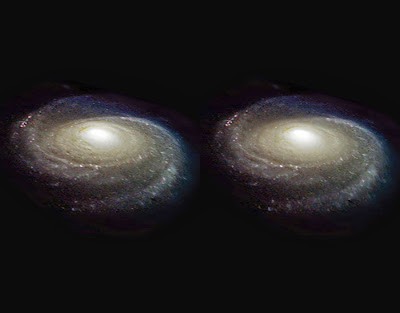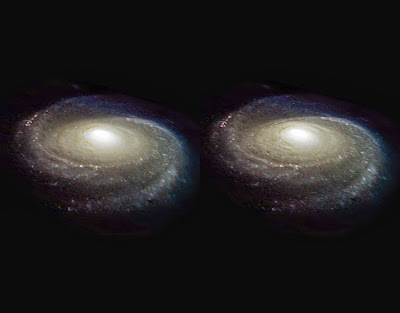COPYRIGHT, PLEASE NOTE
Tuesday, March 25, 2008
IC 1396 in Color
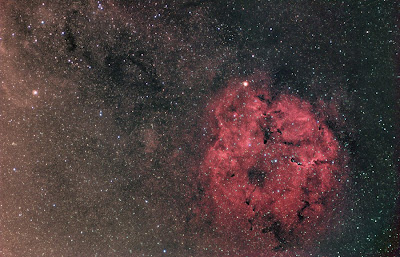
Friday, March 21, 2008
IC 443 & NGC 2175
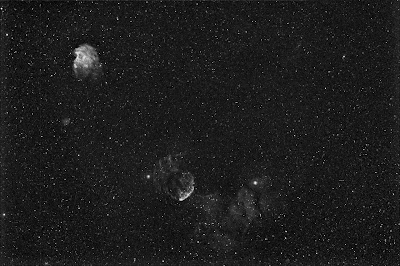
Focusing & imaging system for the camera lens
 Focusing system from top.
Focusing system from top.

image about whole imaging system
 The Business end of the lens
The Business end of the lens
Accurate focusing is needed doe the very fast lens. At f2.8 the sharp focus zone is about 20/1000 mm! Focusing by hand is a pure Lottery. I have TCF-s focuser and its temperature compensated, so thereis no need to refocus every time when temperature drops.
The focusing system has been build from the scrap metal and some parts found from
the drawer.
Its very easy to move the focuser back and forth between main scope
and the lens.
There is a right size can lid bolted down to a L-shape body.
Focuser is then atattched to the lid.
In a focuser, there is a brass tube. This tube goes back and forth when focuser moves.
Its then rotate the focuser ring of the camera lens. There is peace of fine sandpaper glued
to the tube to prevent slipery, tube has allso a spring load for the same purpose.
I have used TCF-s focuser but it can be any focuser, even manual one!
It will make focusing easier and less random.
The whole project took about three hours of time and cost 50c (I had to buy
some bolts)
The whole assembly is then attached to the dowetail rail at top of the LX200 scope.
This is a second version.
The firs version was made by blywood, but I made it again with metal doe flexsure problems.
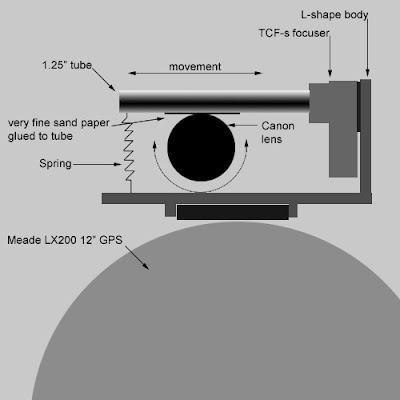 Shematic
Shematic
Thursday, March 20, 2008
IC 1396 & Dark nebulas in Hydrogen Alpha light
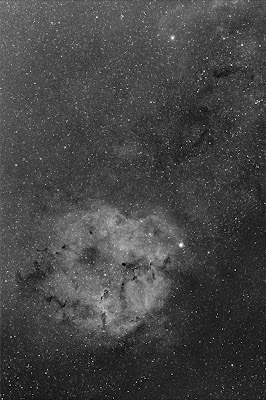 After playing with 3D stuff I returned back to real astro imaging.
Last night was allmost full Moon and doe that I selected the target from opposite side of the sky.
IC 1396 was about 30-36 degrees above horizont during the capturing.
IC 1396 is a large emission nebula. Image scale fits well with field of view
of Canon FD 200mm f2.8 lens. There is lots of faint nebulosity around the field.
Dark nebulas, visible in image, are dark hydrogen clouds and
they are blocking light from background stars.
One part of the large nebula is a famous "Elephant's Trunk Nebula", seen in lower
part of the image.
After playing with 3D stuff I returned back to real astro imaging.
Last night was allmost full Moon and doe that I selected the target from opposite side of the sky.
IC 1396 was about 30-36 degrees above horizont during the capturing.
IC 1396 is a large emission nebula. Image scale fits well with field of view
of Canon FD 200mm f2.8 lens. There is lots of faint nebulosity around the field.
Dark nebulas, visible in image, are dark hydrogen clouds and
they are blocking light from background stars.
One part of the large nebula is a famous "Elephant's Trunk Nebula", seen in lower
part of the image. Elephant's Trunk detail from 10.12.2007
Older image of the "Elephant's Trunk", with longer FL
This formation can be seen in upper image. (lower part of the picture).
LX200 GPS 12" f6.3 + SXV-AO (Active Optics system) H-a 4h Elephants trunk nebula in IC 1396
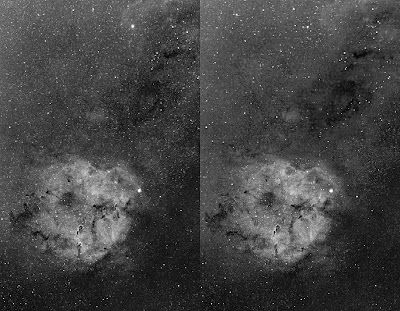 Parallel Vision Stereo Image
Parallel Vision Stereo Image
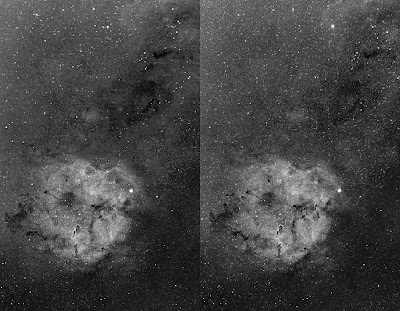 Cross Vision Stereo Image
Cross Vision Stereo Image
Chilifornia Nebula in 3D
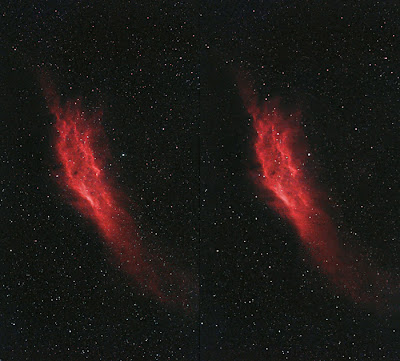
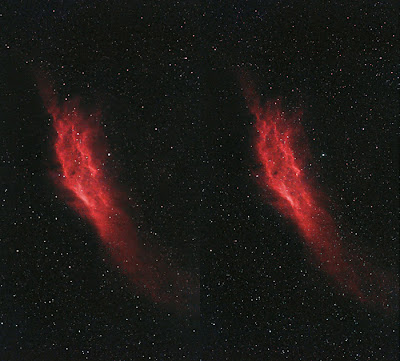
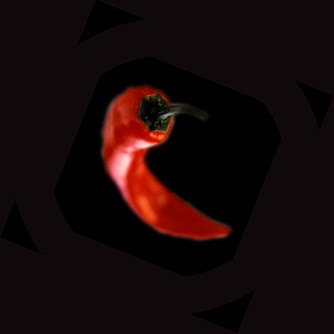
Wednesday, March 19, 2008
3D Bubble Nebula
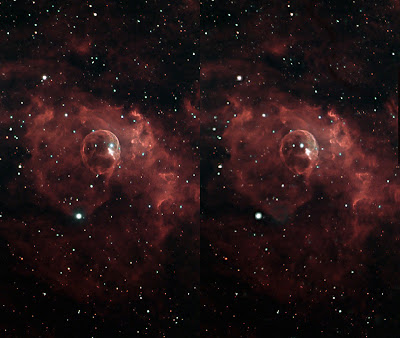
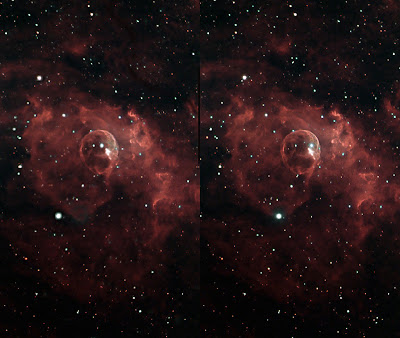
Tuesday, March 18, 2008
M81, 3D transformation
M81, Odd Stereo Pair
